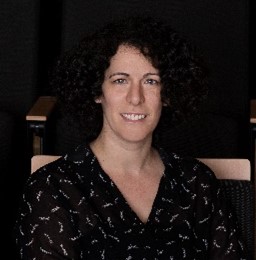Chicago Future Manufacturing Seminar Series: Additive Manufacturing of Polymer-Matrix Composites: Opportunities in Designing Degrees of Freedom

- When:
- Thursday, April 25, 2024 12:00 pm - 1:00 pm
- Where:
- Zoom
- Speaker:
- Professor Noa Lachman, Ph.D., Department of Materials Science and Engineering, The Iby and Aladar Fleischman Faculty of Engineering, Tel Aviv University, Israel
- Description:
Chicago Future Manufacturing Seminar Series:
Additive Manufacturing of Polymer-Matrix Composites: Opportunities in Designing Degrees of Freedom
Abstract: Additive manufacturing (AM) allows high versatility of design and materials selection, thus paving the way for easy fabrication of new materials and devices. The oldest and most common extrusion-based additive manufacturing technique can be easily utilized to process thermoplastics nanocomposites, their applications ranging from aerospace, through medicinal, down to house-hold recreational. However, the transfer from traditional processing and neat polymers to AM of micro- and nanocomposites is far from trivial. Concentrations of additives large enough to affect final desired properties will also significantly affect manufacturing properties, such as stiffness, heat transfer, and melt viscosity. Furthermore, the dispersion and orientation of the particles within the final material are also affected by the printing process and need to be accounted in the design to optimize the final product. In this talk, the anisotropic nature of the extrusion AM process will be discussed and exploited to improve and tailor the nanocomposite properties. Examining the effect of different printing parameters such as temperature, resolution and printing orientation, on the structural outcome, enables altering derivative properties such as mechanical anisotropy and electrical conductivity. We find that the extrusion-based process induces orientation in nanoparticles within the matrix as well as significantly improves their dispersion, thereby homogenizing the nanocomposites. Moreover, altering printing parameters as resolution, patterning and orientation can affect the post-print anisotropy, despite printing an isotropic material – due to the nanostructural effects of the printing process. These results demonstrate the versatility of AM and its ability to add another degree-of-freedom to the design, exploited in smart-materials applications.- Contact:
- Keturah Mitchell
- Notes:
